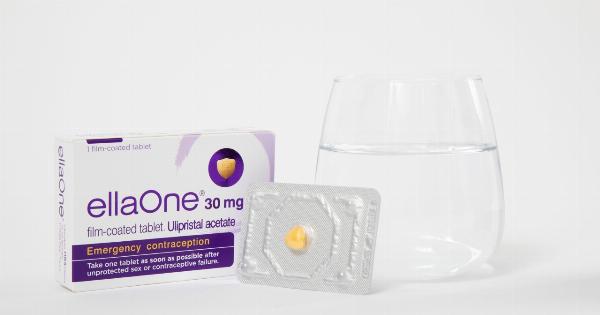Birth control is a method or device used to prevent pregnancy. With numerous options available today, it can be challenging to determine which method is the most effective.
In this article, we will compare the effectiveness of various birth control methods to help you make an informed decision.
Hormonal Methods
1. Birth Control Pills:.
Birth control pills are a popular choice for many women. They contain synthetic hormones that prevent ovulation, thicken cervical mucus to hinder sperm movement, and thin the uterine lining to prevent implantation.
When used correctly, birth control pills are 99% effective.
2. Patch:.
The birth control patch is a thin, beige, plastic patch that releases hormones into the body through the skin. It works similarly to birth control pills and has a similar effectiveness rate of 99% when used correctly.
3. Vaginal Ring:.
The vaginal ring is a small, flexible ring that is inserted into the vagina. It releases hormones and offers similar effectiveness to birth control pills and patches, with a 99% success rate.
Barrier Methods
4. Male Condoms:.
Male condoms are worn over the penis to prevent sperm from entering the vagina. When used correctly, male condoms are about 98% effective in preventing pregnancy. They also provide protection against sexually transmitted infections (STIs).
5. Female Condoms:.
Female condoms are inserted into the vagina to prevent sperm from reaching the uterus. They have a slightly lower success rate than male condoms, with an effectiveness rate of approximately 95%.
6. Diaphragm:.
A diaphragm is a dome-shaped cup made of silicone that covers the cervix. Used with spermicide, diaphragms can be up to 94% effective in preventing pregnancy.
Long-Acting Reversible Contraceptives (LARCs)
7. Intrauterine Device (IUD):.
An IUD is a small T-shaped device inserted into the uterus. There are hormonal and non-hormonal options available. Hormonal IUDs can prevent pregnancy for up to 3-6 years, while non-hormonal IUDs can be effective for up to 10 years.
Both types have a success rate of over 99%.
8. Implant:.
An implant is a small rod inserted under the skin in the upper arm, releasing hormones to prevent pregnancy. It is highly effective, with a success rate of over 99% for up to 3 years.
Sterilization
9. Tubal Ligation:.
Tubal ligation, also known as “getting your tubes tied,” is a surgical procedure that permanently blocks or seals the fallopian tubes. It is a highly effective method with a success rate of 99.5%.
Fertility Awareness-Based Methods
10. Natural Family Planning:.
Natural family planning methods involve tracking and charting a woman’s menstrual cycle to determine fertile and non-fertile days. When used correctly, these methods can be up to 95% effective.
Conclusion
When it comes to birth control, the effectiveness of each method varies.
Hormonal methods such as birth control pills, patches, and vaginal rings offer a success rate of 99%, while barrier methods like condoms and diaphragms range from 94% to 98% effectiveness. LARCs, including IUDs and implants, provide over 99% effectiveness, and sterilization options like tubal ligation have a success rate of 99.5%.
Fertility awareness-based methods, such as natural family planning, can be up to 95% effective when used correctly. It is important to consult with a healthcare provider to determine the most suitable method for your unique needs and preferences.






























